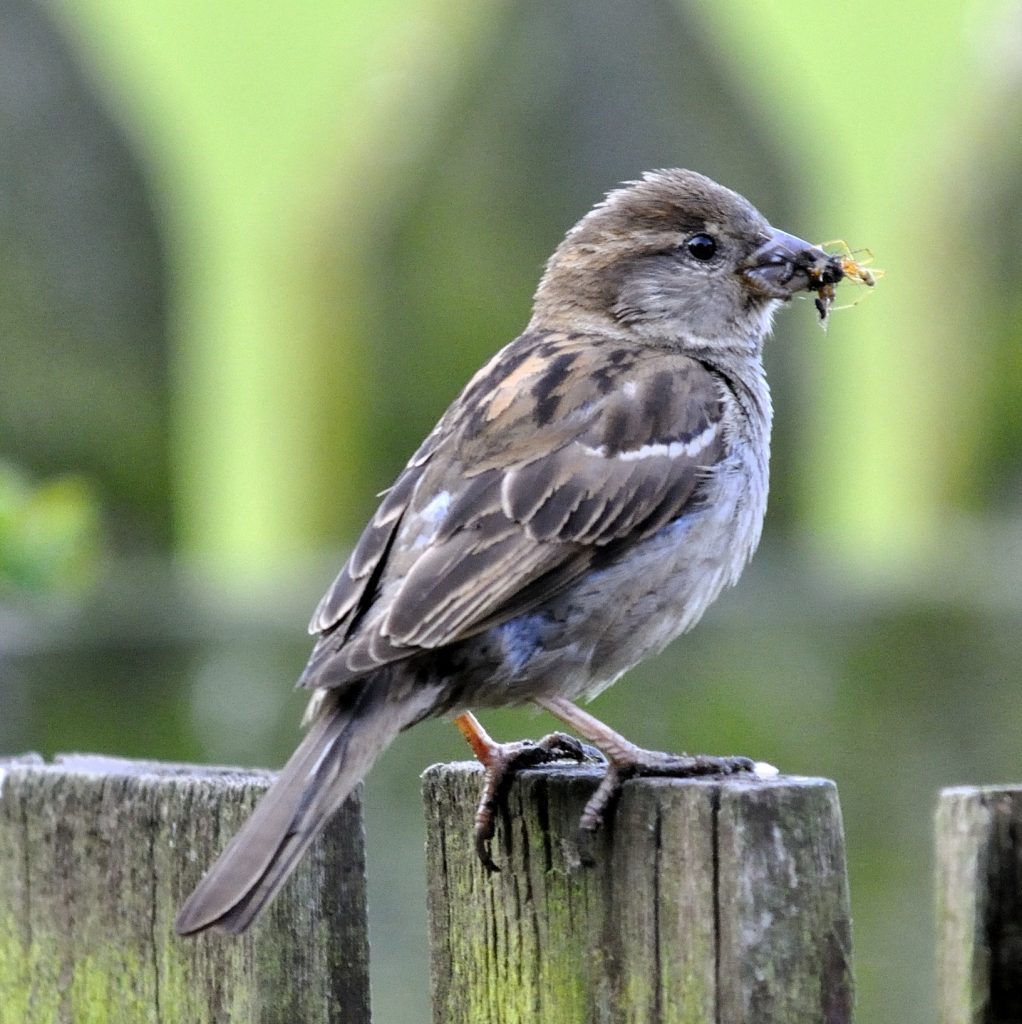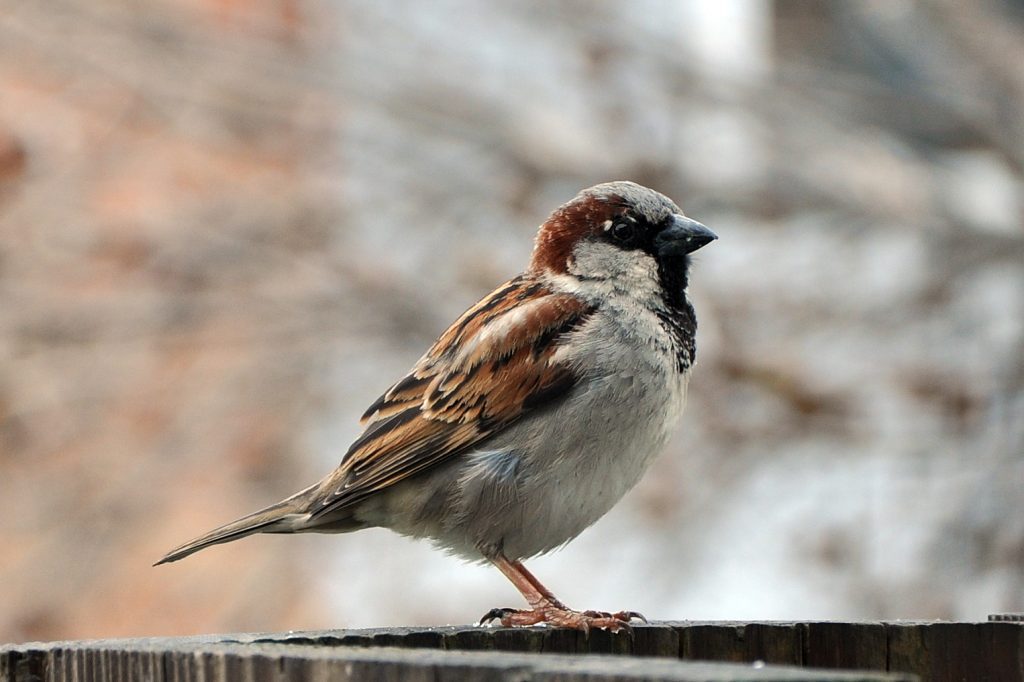
Is the House Sparrow a pest? Depends on your point of view. The males (see below) are actually attractive birds with their black bibs and gray foreheads although the females (on the left) are very drab. But many people resent their use of their bird feeders, picking away at their spinach garden, or usurping bird houses meant for wrens or bluebirds. And they do those things and more, but compared to pests like Star Thistle, feral cats, and European Starlings, they are really a minor nuisance.
Let’s talk about one of our more common birds – found nearly all over the world. The House Sparrow, once called the English Sparrow, was a very successful introduction to the U.S. in the late 1800’s by immigrants who wanted to bring a bit of the old country into their new country. The first birds brought over (at up to $500 per pair!) did not survive and reproduce. Eventually they made New York’s Central Park their home and rapidly increased their populations and spread across the eastern U.S. They adapted quite well to urban settings; so well, in fact, that they became pests and bounties were offered for them twenty years after their introduction. The House Sparrow has spread over most of North America and every other temperate clime.
On the positive side, they eat a lot of insects. Surprisingly, the House Sparrow in England, one of its native homes, is declining, and the cause is apparently a decrease in insect numbers. No doubt other birds are affected too, but as the most well known bird in the British Isles, this is a concern. Why are insects declining? No one cause, but global warming, pesticide use, pollution, and decreasing habitat all play a role. Bird populations of many species are declining drastically in the U.S. as well, but I’ll save that for another blog.
I often get questions about how to keep sparrows or starlings or pigeons or hawks or blackbirds or some other species away from a birdfeeder, birdbath, pool, backyard, or house. It is hard to make a habitat suitable for only the species of birds you would like to see and keep others out. We would all like to have a weed free lawn and not have to deal with mosquitoes or gnats, but nature doesn’t work like that. Nature works best when there is diversity, even if it includes things you don’t like
I guess what I am saying is that the House Sparrow, although not a native, is part of our ecosystem now, and we should enjoy feeding and watching them as we do other birds. When I was in college, I worked for a scientist who was looking into the molting patterns of House Sparrows. He caught birds, dyed each of the tail feathers a different color, and released the birds. Then, either by observing them in the field or recapturing them, he could easily tell what tail feathers had been lost and replaced. We received lots of phone calls about exotic birds during this research!
